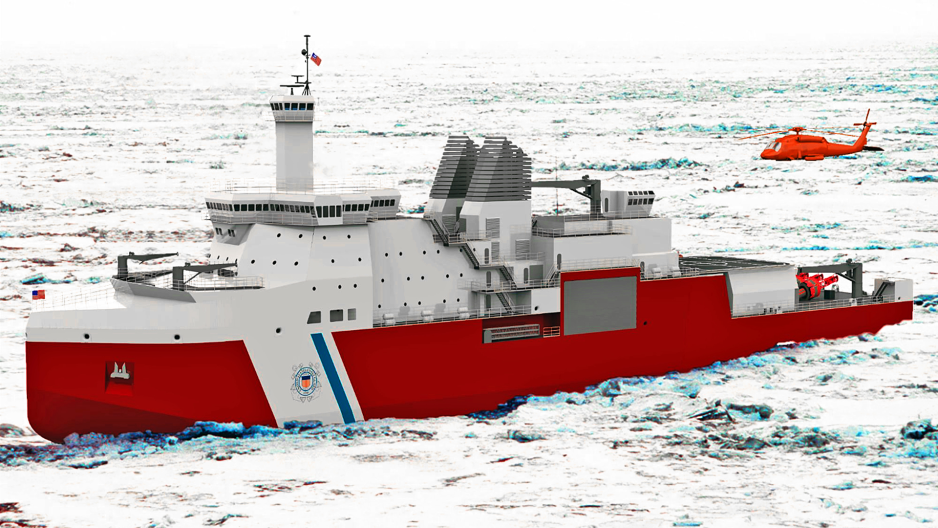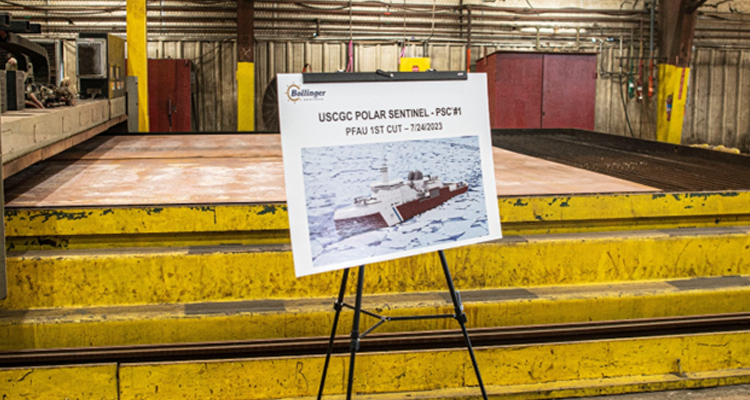U.S. Coast Guard Starts Construction of First New Heavy Icebreaker in 50 Years

Illustration of the Polar Security Cutter. (Source: USCG)
A decade in the making the U.S. Coast Guard is set to finally begin work on its first heavy icebreaker in 50 years. Construction is expected to take a minimum of five years, though additional delays could push delivery in the 2030s.
Following a six-year process since awarding of the original contract the U.S. Coast Guard announced it is beginning construction of the Polar Security Cutter. The vessel represents the first heavy icebreaker built by an American shipyard in more than 50 years.
The last two such icebreakers were the Polar Sea and Polar Star, of which only the latter remains in service following an ongoing service life extension program.
The start of construction represents a major step in a much delayed process of finalizing the vessel’s design and acquiring the manufacturing methods necessary to actually build the vessel.
The purchase of Halter Marine shipyards, which was awarded the contract in April 2019, by Bollinger Shipyards in 2022 further delayed the process.
Re-learning how to build
Bollinger began work on test modules, termed prototype fabrication assessment units (PFAUs), to familiarize workers with the welding technique used for the vessel’s high-strength steel alloy called EQ47.
Originally the Coast Guard had planned to complete all eight PFAUs prior to beginning construction, but as of Spring 2024 work had only begun on three test modules. Several units remain unfinished or only planned.
The PFAU process was created to help the shipbuilder (re)learn construction techniques.
“The PFAU effort was structured as a progressive crawl-walk-run approach to help the shipbuilder strengthen skills across the workforce and refine construction methods before full-rate production begins. The PFAU process has prepared the government and the shipbuilder to begin full-scale production of the PSC class, resulting in more precise, cost-effective and reliable construction processes,” the Coast Guard explained in a statement.

Steel for the PFAUs displayed at the shipyard in August 2023. (Source: USCG)
Construction without a finalize design
Against a government agency’s recommendations construction will proceed without having a finalized design. Government watchdog GAO had reiterated the importance of having a fully completed design prior to beginning construction.
According to Coast Guard officials work may begin with design work only around 95 percent complete. A similar approach by the U.S. Navy related to its FFG 62 Frigate program has led to cost overruns and delays, the GAO warned during a Congressional hearing earlier this year.
Even without any additional delays – an unlikely proposition – the first Polar Security Cutter will not join the Coast Guard’s icebreaking fleet before 2030; bringing to a conclusion a 20-year process to fund and construct a new heavy icebreaker.
Hoping for several vessels
Policy discussions in support of the vessel go back at least to the mid-2000s, with an earnest push to secure funding for the program reaching back to the early 2010s.
The Coast Guards hopes that the overall Polar Security Cutter program will result in several vessels. Current planning is for at least three heavy icebreakers, though only the first has thus far been funded.
The service is also looking to complement the heavy Polar Security Cutters with a number of medium icebreakers.
To ensure year-round presence in the Arctic and to meet its expanding responsibilities Coast Guard leadership has repeatedly stated it would require a mix of six heavy and four medium vessels, a tall order for U.S.-based shipyards.
The recently-signed ICE pact with Canada and Finland may help to speed up future acquisitions through exchange of know-how or possibly even the purchase of foreign-built icebreakers, though current U.S. regulations do not permit for this.


